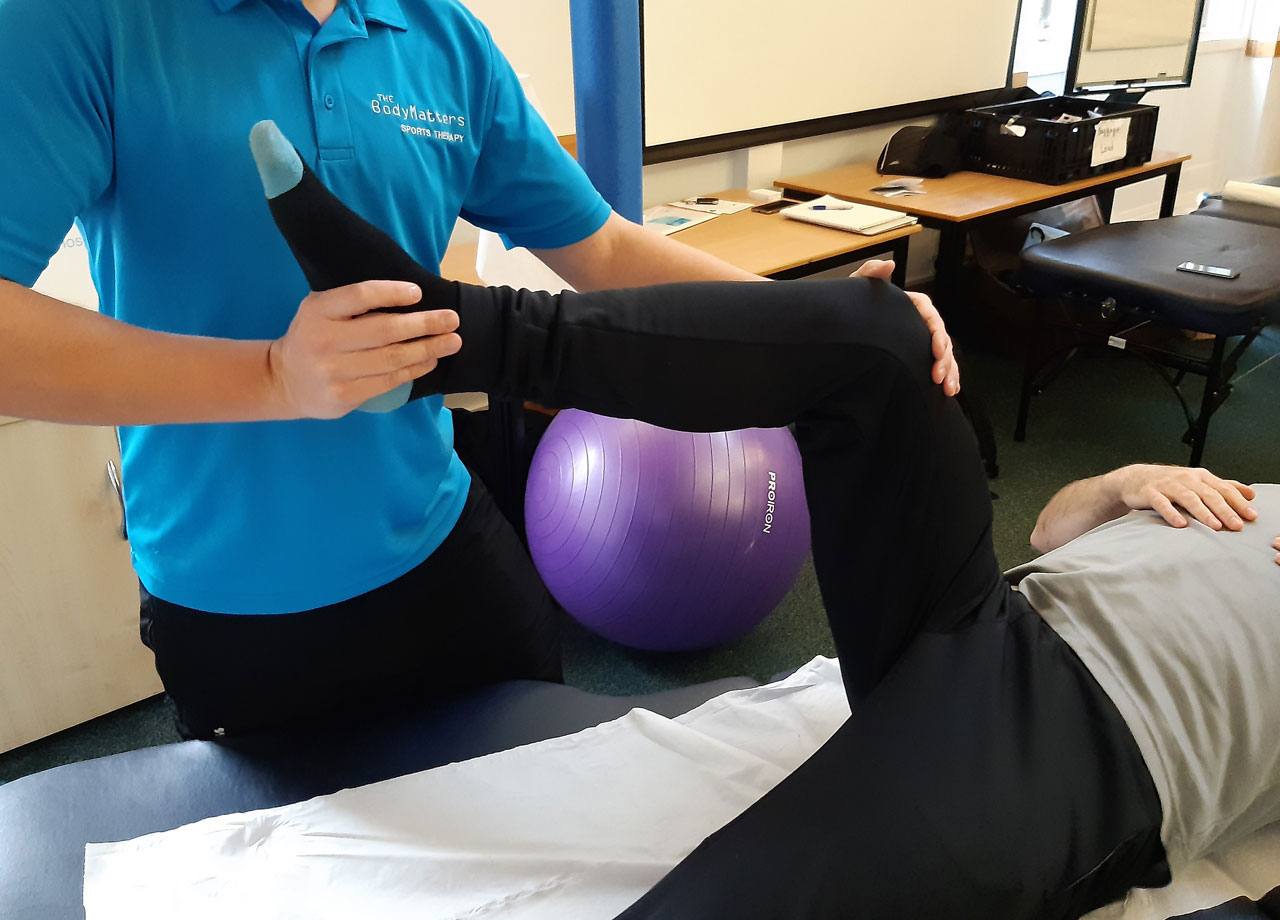
We offer advice and treatment to help with hypermobility in Southend at The Body Matters. Treatments are available from our clinic based in Leigh-on-Sea, Essex. We also offer telephone & online support and remote consultations. Call us on 01702 714968 for more information.
What is hypermobility?
‘Hyper’ means to ‘more than average’ and ‘Mobility’ basically means ‘movement’ so Hypermobility = more than average movement in joints and connective tissues. Hypermobility can be generalised (affecting multiple joints) or localised to specific joints. Hypermobility is often associated with conditions such as Ehlers-Danlos syndrome (EDS) and joint hypermobility syndrome (JHS). There are many different sub-types of hypermobility meaning people will be more or less affected by their hypermobility, but there is no inevitability that it will have a negative impact on their lifestyle.
What causes hypermobility?
Hypermobility and Hypermobility disorders are often hereditary, caused by premature birth and other factors affecting us in the developmental stage or very early in life. The ligaments that help stabilise the joints in the body are too slack, meaning we have a great range of motion. During our youth, we may, therefore, gravitate towards activities like dance, gymnastics or even contortionism. We enjoy our unusual movement ability and do not tend to experience it as a problem. However, as we get older our body may start suffering from this excessive bendiness. The slackness of the ligaments can mean that our joints start experiencing increased wear and tear. Our muscles need to compensate for the lack of stability from the ligaments and start having to work harder, resulting in us experiencing them as tight and achy. In some cases, hypermobility can also be acquired through injuries, repetitive strain, or certain medical conditions.
What are the symptoms of hypermobility?
Hypermobility is characterised by excessive joint flexibility, often leading to symptoms such as joint pain, instability, and a propensity for dislocations. Individuals with hypermobility may experience chronic joint and muscle discomfort, particularly after physical activity. Fatigue, bruising, and soft tissue problems like tendonitis are common. Hypermobility can affect various joints, including the knees, elbows, and fingers.
Can hypermobility be treated?
While hypermobility itself has no cure, its symptoms can be managed effectively. Treatment strategies focus on enhancing joint stability, minimising pain, and preventing complications. Physical therapy plays a central role, emphasising exercises to strengthen supporting muscles and improve posture. Pain management techniques, including medication and lifestyle modifications, are often employed. Hypermobility associated with conditions like Ehlers-Danlos syndrome may require a comprehensive, multidisciplinary approach involving specialists in rheumatology, physical therapy, and pain management. Individualised treatment plans are crucial for optimising function and quality of life.
Am I able to exercise with hypermobility?
Pain caused by hypermobility will have a negative impact on an individual’s life; therefore it is extremely important that they seek the right advice about activity and exercise. Do not worry as the vast majority of people with hypermobility will live long healthy and active lives. As long as you are sensible about the type of exercise you take part in then it will be safe, and the more you do lessens the risk of pain in the future.
Are there specific activities to avoid with hypermobility?
Individuals with hypermobility should generally avoid high-impact activities that put excessive strain on joints. This includes activities like gymnastics, certain types of dance, and contact sports. Low-impact exercises and activities that promote joint stability are often recommended.
Can hypermobility improve over time?
The natural course of hypermobility varies among individuals. While joint flexibility may diminish with age for some, particularly in non-pathological cases, improvement is not guaranteed. For those with hypermobility associated with conditions like Ehlers-Danlos syndrome, the underlying genetic factors usually persist, and the condition does not typically improve significantly over time. Management strategies, including physical therapy and lifestyle modifications, play a crucial role in mitigating symptoms and optimising function. Regular monitoring by healthcare professionals is essential to track progression and adjust treatment plans as needed, ensuring a comprehensive approach to enhance the quality of life for individuals with hypermobility.
Treatment for Hypermobility in Southend

Manual Therapy for Hypermobility
Manual therapy including the mobilisation of stiff hypermobile joints can be helpful in alleviating the symptoms, as can soft tissue massage and trigger point therapy.
Osteopathy for Hypermobility
Hypermobility can be treated by an Osteopath by encouraging the development of core strength and the increased stability of muscles and joints.
MSK Physio for Hypermobility
Musculoskeletal physiotherapy is an effective way of strengthening the area surrounding the joint to provide more support and minimise your symptoms.
Pilates for Hypermobility
Joint pain is a result of excessive wear and tear. This means with specialised Pilates we make sure you move in a more balanced way, that does not load individual joints to a degree that harms them.
If you think you may have, or have been told that you do have hypermobility or joint pain, why not try The Body Matters team and find out what you can be doing to encourage and help you live a more active lifestyle?
Remote Consultations Available
We continue to use remote consultations to provide our services without physical interaction, if required, by shifting some appointments to video consultations.
Read our Remote Consultations page for more information.
Call The Body Matters on 01702 714968 for more information about hypermobility in Southend-on-Sea and Leigh-on-Sea, Essex.


